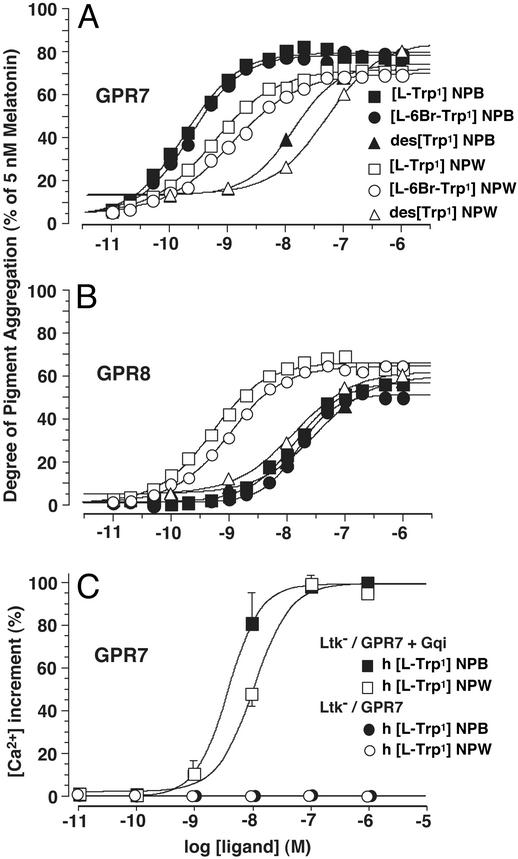Figure 2.
In vitro pharmacology of NPB and NPW assessed by melanophore pigment aggregation assay (A and B) and [Ca2+]i transient assay (C) in mammalian cells. (A and B) X. laevis melanophores were transiently transfected with human GPR7 (A) or GPR8 (B) cDNA, and challenged with various forms of synthetic human NPB and NPW peptides. Brominated NPB and nonbrominated NPB have approximately equal potencies on GPR7 (A), whereas both of them have much weaker potencies on GPR8 (B). Brominated NPW and nonbrominated NPW both have similar potencies on GPR7 and GPR8. des[l-Trp-1]NPB and des[l-Trp-1]NPW are both much less potent on GPR7 and GPR8. Data are the mean of eight separate experiments. (C) Ltk− cells were stably cotransfected with the human GPR7 cDNA and Gqi chimera cDNA, and challenged with nonbrominated synthetic human NPB and NPW. NPB has a modestly higher potency than NPW. When Gqi cDNA is not cotransfected, neither NPB nor NPW could induce the calcium mobilization (open and filled circles are all overlapping). Peak [Ca2+]i values are represented as percentages of the maximum response. Data are presented as the mean ± SEM of three experiments performed in duplicate.

